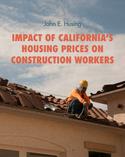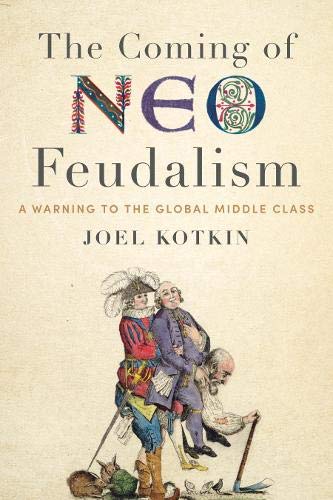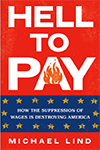Californians need to give up on their dream of a “ranch-house lifestyle” and an “ample backyard” and the state should become “more like New York City,” writes LA Times columnist George Skelton (reprinted in the Mercury-News and East Bay Times in case you run into the LA Times paywall). After reading his article, the Antiplanner has just one question: Why? read more »
Housing
California Using Band-Aids for Homeless Wounds
The problem with the California economy is not greenness. It’s homelessness. Get these people off our streets first. Make living like a human being affordable again. If there is no incentive to work, why work.
Every year there are over 2,500+ new bills expected to fill the annual calendar of the 80 Assemblymen and 40 Senators of the California State legislature. Fortunately, most never make it to the Governor for signature. read more »
- Login to post comments
Impact of California's Housing Prices on Construction Workers
This report takes a close look at the impact of California’s very high residential prices on the ability of construction workers — the very people who build our homes — to afford to live within the markets where they are work.
It does so by reviewing the number of workers and pay scales in 50 different construction occupations. It distinguishes between pay levels for all construction workers and those who are in unions. The research separately studies Southern California and the San Francisco (SF) Bay Area since real estate markets are subject to very different forces depending upon their geographic location. read more »
- Login to post comments
Escaping the Strait Jacket of "Place"
We like to think of "place" as something positive, something that sets our patterns of living in a good way, but sometimes those patterns and forms become a strait jacket that keep our communities from evolving and growing. Sometimes you have to throw off that strait jacket, and Seattle, where 150,000 people have moved in the last 20 years, seems to be doing just that. read more »
- Login to post comments
The City Of Dallas Needs A Homebuilding Boom To Ensure Economic Success
While the North Texas economy is booming, the core city of Dallas faces challenges bedeviling other cities: a dwindling middle class, bifurcation into neighborhoods of haves and have-nots, and an emerging home affordability problem. read more »
- Login to post comments
California's Message: You Built That, Now Get Out!
The people who build our homes increasingly can no longer afford them. As the state elite and their academic cheering crew celebrate our progressive boom, even the most skilled, unionized construction workers, notes an upcoming study, cannot afford to live anywhere close to the state’s major job centers. read more »
- Login to post comments
The State of Jefferson
Last year a neighbor began flying a State of Jefferson flag on the side of his house that faces mine. I had no idea what it represented, so I looked it up. Short version: the 23 rural northern counties of California want to break away from the rest of the state so they can do their own thing. read more »
Millennial Preferences: Not So Different
Economists at the Federal Reserve Board have published exhaustive research on Millennial spending patterns and generally find that they are similar to those of other generations (See: “Are Millennials Different?,” by Christopher Kurz, Geng Li, and Daniel J. Vine). The research examines Consumer Expenditure (CE) Survey data and the conclusion is summarized by the authors: read more »
- Login to post comments
Why Suburbs Need To Be The Next Frontier For Cities Policy
“Around the world, the vast majority of people are moving to cities not to inhabit their centres but to suburbanise their peripheries. Thus when the United Nations projects the number of future ‘urban’ residents… these figures largely reflect the unprecedented suburban expansion of global cities.” read more »
- Login to post comments
Direction of Dallas and Urban Growth
Should the direction of Dallas urban growth continue to grow north? Does inserting low-income housing in North Dallas create an inclusive urban growth direction for Dallas? Does the direction of Dallas and its current goal of moving low-income wage earners closer to higher wage jobs in North Dallas increase or decrease wealth for low-income families? The SMU/George W. Bush Institute Conference, Policies to Promote Inclusive Urban Growth, was a meaningful conference on the direction of Dallas and cities and gave clues to all these questions. read more »
- Login to post comments





















